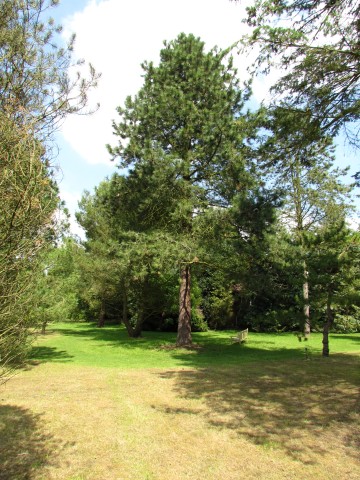Common Name: Ponderosa Pine
Latin Name: Pinus ponderosa
Size: 0 (min) to 90 (max)
Are you looking for this plant? Let us know and we'll help you find it!
Are you a retailer who sells this plant? Do you want to list it here? You can enter your inventory directly on PlantPlaces.com, using a web browser or an Android™ device. Contact Us to request an account.
Are you a retailer who sells this plant? Do you want to list it here? You can enter your inventory directly on PlantPlaces.com, using a web browser or an Android™ device. Contact Us to request an account.
Plant Facts
Do you have this plant?
Would you like to dedicate a plant to someone?
 Ponderosa Pine
Ponderosa Pine
Pinus ponderosa
Origin: Western North America
Maximum Height: 90 feet
Contact us to order an aluminum plant label from PlantPlaces.com!
Category: EvergreenTree Would you like to dedicate a plant to someone?
 Ponderosa Pine
Ponderosa PinePinus ponderosa
Origin: Western North America
Maximum Height: 90 feet
Family: Pinaceae
Genus: Pinus
species: ponderosa
Origin: Western North America
Size: 0 (min) to 90 (max)
Size Description: Large Evergreen Tree
Notes: Notes courtesy of the US Department of Agriculture. Most information from the USDA is public domain.
Description Pinus ponderosa P. & C. Lawson, is a large, long-lived, native forest tree common throughout the western U.S. Height of mature trees range from 55 to 90 feet. Diameter breast high ranges from 15 to 35 inches. Age at maturity ranges from 70 to 250 years. The needles are 3 to 5 inches long with 3, or rarely 2 to 4, needles in a cluster (bundle). The needles usually remain on the stem 3 to 4 years with the major needle drop in September and October. The cones are pineapple-shaped, 3 to 6 inches long, and take 2 years to mature. The bark is dark brown to nearly black when young and turns from cinnamon brown to orange-yellow at about 90 years of age. This tree has a deep tap root except on shallow soils where roots often follow cracks for considerable distance. This tree is well adapted to grow on bare rock with its roots following crevices or cracks in the rock.
Uses Beautification: This is a handsome tree for purposes of beautification but due to its height should not be grown within road rights-of-way.
Erosion Control: This tree with its native understory is an excellent erosion control cover. It is one of the best evergreens for windbreaks.
Livestock: The young tree itself is not eaten by livestock unless most of the other browse species have been destroyed by overgrazing. When eaten by cows during gestation this species may cause abortion.
Recreation: Some of the finest campgrounds and picnic areas in the west are found in native stands of ponderosa pine. Trees are stable and generally wind-firm with little danger of top breakage.
Wildlife: While deer, elk and mountain sheep do not eat the needles unless other browse species are totally absent, they do feed on the understory species. The seeds of ponderosa pine are choice food of red-winged blackbirds, chickadees, mourning doves, finches, evening grosbeaks, jays, Clark's nutcrackers, nuthatches, white-throated sparrows, rufous-sided towhees, turkeys, chipmunks and squirrels. The pine needles are important food of blue and spruce grouses. The pine bark is fair food for beavers, and is used by porcupines which sometimes damage the trees. Nuthatches dig nest holes in dead trees.
Wood Products: It is used in small extent for Christmas trees but not well suited to cultural work for this purpose. It makes excellent lumber for cabinet and construction work. It is used for veneer, core stock and sheathing. It is used for paper pulp but demand is low. It is used for poles and has fair durability for posts. It is used for fuel especially for fireplaces.
Characteristics:
Do you like this plant?
Plant Images and Specimens
Location: Cambridge University Botanic Garden 1 Brookside Cambridge, Cambridgeshire, United Kingdom CB2 1JE [Latitude: 52.192279100000000 Longitude: 0.125822983333333] Specimen: 2032

Pinus ponderosa
Location: Cambridge University Botanic Garden
Photo Credit: Brandan Jones
Season: August 2012
Location: New York Botanical Garden - Bronx [Latitude: 40.864735680000000 Longitude: -73.880185920000000] Specimen: 7114
Location: Kew Gardens Richmond Surrey (London, England) TW9 3AB [Latitude: 51.475728320000000 Longitude: -0.303357330000000] Specimen: 10567
Location: Vienna, Austria [Latitude: 48.189710970000000 Longitude: 16.382555690000000] Specimen: 10820